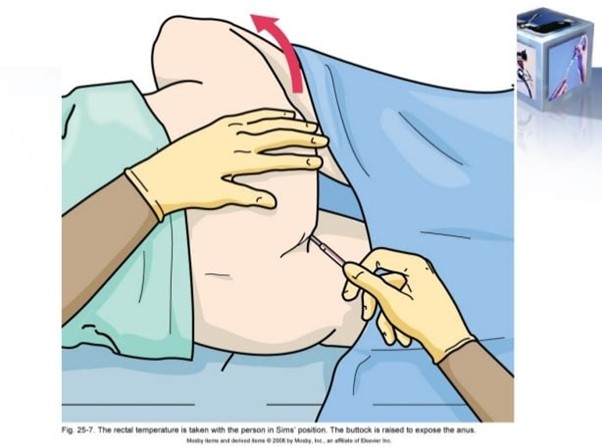The client was admitted to the medical floor. Upon arrival, the client was assessed: He is difficult to arouse but follows commands. He has a peripheral IV which is infusing normal saline at 145 mL/hr. No redness or edema at the site. Breath sounds are clear and equal bilaterally. He appears pink and well-perfused.
The client had a tonic-clonic seizure that lasted for 3 minutes and 5 seconds. The client became apneic during the seizure and the oxygen saturation dropped to 48%. The client was manually ventilated at 100% oxygen and padding was placed around the vent for safety. After the seizure, the client was turned to his left for recovery.
The physician comes to the bedside following the seizure and prescribes phenytoin. The PN administers the phenytoin as prescribed.
What are the possible toxic effects of phenytoin that the PN should closely monitor the client for after administration?
Select all that apply
Ataxia
Drowsiness
Altered blood coagulation
Anxiety
Aphasia
Vertigo
Visual disturbances
Vomiting
Correct Answer : A,B,C,F,G
Ataxia: Phenytoin can cause problems with coordination and balance, leading to ataxia. The PN should monitor the client for unsteady gait or difficulty with movements.
Drowsiness: Phenytoin can cause drowsiness or sedation. The PN should observe the client for excessive sleepiness or difficulty staying awake.
Altered blood coagulation: Phenytoin can affect blood clotting factors, potentially leading to altered blood coagulation. The PN should assess the client for any signs of bleeding or bruising.
Vertigo: Phenytoin can cause dizziness or vertigo, which is a spinning sensation. The PN should be alert for complaints of dizziness or any difficulty with balance.
Visual disturbances: Phenytoin can cause visual disturbances, such as blurred vision or double vision. The PN should monitor the client's vision and report any changes.
The following options are incorrect regarding the toxic effects of phenytoin:
- Anxiety: Anxiety is not a recognized toxic effect of phenytoin. However, it is important to assess the client for any signs of anxiety or emotional changes.
- Aphasia: Aphasia refers to a language impairment and is not typically associated with the toxic effects of phenytoin.
- Vomiting: While phenytoin can cause gastrointestinal side effects, such as nausea and vomiting, it is not directly related to its toxic effects. However, the PN should still monitor the client for any signs of nausea or vomiting.
Nursing Test Bank
Naxlex Comprehensive Predictor Exams
Related Questions
Correct Answer is A
Explanation
Taking a rectal temperature requires a higher level of skill and carries a higher risk of injury compared to other methods, especially when dealing with a 2-year-old child with leukemia. Given the client's condition, it is important to minimize any potential harm or discomfort. Taking a tympanic temperature is a safer alternative that provides an accurate reading without the risk of injury.
B. Reminding the UAP to lubricate the thermometer before insertion is not appropriate because the PN should not encourage or support the UAP in performing a rectal temperature on a high-risk client. The focus should be on using a safer and less invasive method.
C. Instructing the UAP to report the results to the PN immediately is not necessary in this situation because the PN has already determined that taking a rectal temperature is not appropriate.
Instead, the PN should guide the UAP toward using the tympanic method.
D. Observing the UAP to ensure the thermometer is inserted correctly is not appropriate in this case because the PN has already determined that taking a rectal temperature is not the recommended course of action. It is more appropriate to redirect the UAP to use an alternative method.

Correct Answer is A
Explanation
The practical nurse (PN) who hears adventitious breath sounds while auscultating the lungs of an older adult who is receiving an IV of 5% dextrose in water (DW) at 100 mL/hour should report the findings to the charge nurse.
Adventitious breath sounds can be indicative of respiratory problems such as fluid accumulation or infection in the lungs. In this case, it is important for the PN to report the findings to the charge nurse to ensure appropriate action is taken to assess and manage the client's respiratory status.
incorrect:
B- Reviewing the last balance of intake and output is important for overall assessment but may not directly address the concern of adventitious breath sounds. It can provide additional information about the client's fluid balance, but it is not the next immediate action in response to the abnormal lung sounds.
C- Slowing the DSW infusion rate to 50 mL/hour is not the most appropriate action to take based solely on the presence of adventitious breath sounds. The abnormal lung sounds may be an indication of an underlying respiratory issue that needs further evaluation and intervention.
Adjusting the infusion rate without a comprehensive assessment and appropriate medical orders could potentially overlook the underlying cause.
D- Documenting the findings and monitoring the client is necessary, but it should not be the sole action taken. Reporting the findings to the charge nurse is crucial to ensure prompt assessment and appropriate intervention.
Whether you are a student looking to ace your exams or a practicing nurse seeking to enhance your expertise , our nursing education contents will empower you with the confidence and competence to make a difference in the lives of patients and become a respected leader in the healthcare field.
Visit Naxlex, invest in your future and unlock endless possibilities with our unparalleled nursing education contents today
Report Wrong Answer on the Current Question
Do you disagree with the answer? If yes, what is your expected answer? Explain.
Kindly be descriptive with the issue you are facing.
